Thomaskantor
Thomaskantor (Cantor at St. Thomas) is the common name for the musical director of the Thomanerchor, now an internationally known boys' choir founded in Leipzig in 1212. The official historic title of the Thomaskantor in Latin, Cantor et Director Musices, describes the two functions of cantor and director. As the cantor, he prepared the choir for service in four Lutheran churches, Thomaskirche (St. Thomas), Nikolaikirche (St. Nicholas), Neue Kirche (New Church) and Peterskirche (St. Peter). As director, he organized music for city functions such as town council elections and homages. Functions related to the university took place at the Paulinerkirche. Johann Sebastian Bach was the most famous Thomaskantor, from 1723 to 1750.
| Thomaskantor of Thomanerchor | |
|---|---|
| Type | Director of music |
| Reports to | Leipzig |
| Formation | 1518 |
| First holder | Georg Rhau |
Position
Leipzig has had a university dating back to 1409, and is a commercial center, hosting a trade fair first mentioned in 1165. It has been mostly Lutheran since the Reformation. The position of Thomaskantor at Bach's time has been described as "one of the most respected and influential musical offices of Protestant Germany.[1]
The readings and required music of the Lutheran services in Leipzig were regulated in detail. The Church Book (Complete Church / Book / Containing / The Gospels and Epistles / For Every Feast-, Sun-, and Apostle Day Of the Entire Year ...) lists the prescribed readings, repeated every year.[2] The church year began with the First Sunday in Advent and was divided in feast days, fasting periods and the feast-less time after Trinity Sunday. For music, there was mainly no concert music such as a cantata during the fasting times of Advent and Lent. Modest music was performed during the second half of the church year, and rich music with more complex instrumentation and more services per day on feast days. Christmas, Easter and Pentecost were celebrated for three days each, and many other feast days were observed.[3] The library of St. Thomas contained works in vocal polyphony from the fifteenth century onward.[4]
The Thomaskantor reported to the city council, the rector of the Thomasschule and the church superintendent.[5] He had the duty to prepare the choir for service in the city's four Lutheran churches:[6] the main churches Thomaskirche (St. Thomas) and the Nikolaikirche (St. Nicholas),[7] and also the Neue Kirche (New Church) and the Peterskirche (St. Peter).[8][9]
As cantor, the Thomaskantor had to compose and take care of copying, rehearsals and performances.[10] He also had to teach music and general subjects.[6] He took part in the admission process for new students to the school.[11] The choir was divided in groups: the most advanced singers performed a cantata every Sunday, alternating between St. Thomas and St. Nicholas, a second group sang at the other church, beginners on feast days at the smaller churches. On high holidays, the cantata was performed in both churches, a morning service in one and a vespers service in the other. To earn additional funding, the choir performed also for weddings and funerals.[12]
As director of music, the Thomaskantor was Leipzig's "senior musician", responsible for the music on official occasions such as town council elections and homages.[6] Functions related to the university took place at the Paulinerkirche.
Today, the Thomaskantor leads the music in services at the Thomaskirche, including weekly afternoon services called Motette which often contain a Bach cantata. He also conducts the choir in recordings and on tours.
 Thomaskirche,
Thomaskirche,
1885 Nikolaikirche, ca. 1850
Nikolaikirche, ca. 1850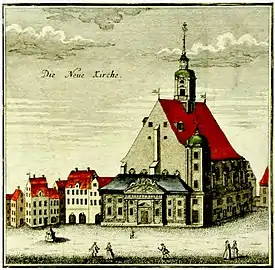 Neue Kirche,
Neue Kirche,
1749 Peterskirche, before 1886
Peterskirche, before 1886_Foto_H.-P._Haack_(berarb.).jpg.webp) Paulinerkirche,
Paulinerkirche,
1749
Known holders of the position
The following table shows the names of the known people in the position, and their time of service, in chronological order from the Reformation to now.
| No. | No. after Bach | Image | Name | Tenure | Born | Died | Notes |
|---|---|---|---|---|---|---|---|
| 1 | 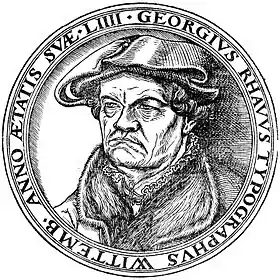 |
Georg Rhau | 1518–1520 | c. 1488 in Eisfeld |
6 August 1548 in Wittenberg |
||
| 2 | Johannes Galliculus | 1520–1525 | c. 1490 in Dresden |
c. 1550 in Leipzig |
|||
| 3 | Valerian Hüffeler | 1526–1530 | |||||
| 4 | Johannes Hermann | 1531–1536 | 1515 in Zittau |
22 April 1593 in Freiberg |
|||
| 5 | Wolfgang Jünger | 1536–1539 | c. 1517 in Sayda |
4 March 1564 in Großschirma |
|||
| 6 | Johannes Bruckner | 1539–1540 | |||||
| 7 | Ulrich Lange | 1540–1549 | 1549 in Leipzig |
||||
| 8 | Wolfgang Figulus | 1549–1551 | c. 1525 in Naumburg |
1589 in Meißen |
|||
| 9 | Melchior Heger | 1553–1564 | in Brüx (today Most) | ||||
| 10 | Valentin Otto | 1564–1594 | 1529 in Markkleeberg |
April 1594 | |||
| 11 |  |
Sethus Calvisius | 1594–1615 | 21 February 1556 in Gorsleben |
24 November 1615 in Leipzig |
||
| 12 | 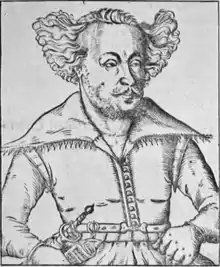 |
Johann Hermann Schein | 1615–1630 | 20 January 1586 in Grünhain |
19 November 1630 in Leipzig |
||
| 13 | Tobias Michael | 1631–1657 | 13 June 1592 in Dresden |
26 June 1657 in Leipzig |
|||
| 14 | Sebastian Knüpfer | 1657–1676 | 6 September 1633 in Asch |
10 October 1676 in Leipzig |
|||
| 15 | Johann Schelle | 1677–1701 | 6 September 1648 in Geising |
10 March 1701 in Leipzig |
|||
| 16 | 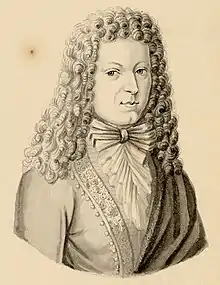 |
Johann Kuhnau | 1701–1722 | 6 April 1660 in Geising |
5 June 1722 in Leipzig |
||
| 17[lower-alpha 1] |  |
Johann Sebastian Bach | 1723–1750 | 21 March 1685 in Eisenach |
28 July 1750 in Leipzig |
||
| 18 | 1 | Johann Gottlob Harrer | 1750–1755 | 1703 in Görlitz |
9 July 1755 in Karlsbad |
||
| 19 | 2 | 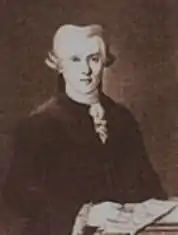 |
Johann Friedrich Doles | 1756–1789 | 23 April 1715 in Steinbach-Hallenberg |
8 February 1797 in Leipzig |
Longest-serving in the role. |
| 20 | 3 | 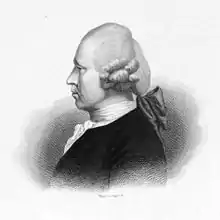 |
Johann Adam Hiller | 1789–1801 | 25 December 1728 in Wendisch-Ossig |
16 June 1804 in Leipzig |
1781–1785 Gewandhauskapellmeister |
| 21 | 4 | 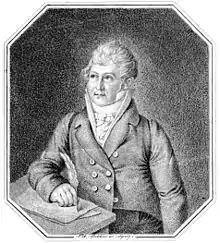 |
August Eberhard Müller | 1801–1810 | 13 December 1767 in Northeim |
3 December 1817 in Weimar |
1810–1817 Großherzoglich-Sächsischer Hofkapellmeister |
| 22 | 5 | 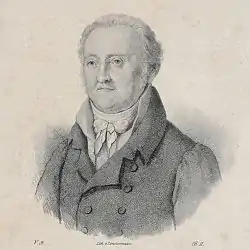 |
Johann Gottfried Schicht | 1810–1823 | 29 September 1753 in Reichenau |
16 February 1823 in Leipzig |
|
| 23 | 6 | Christian Theodor Weinlig | 1823–1842 | 25 July 1780 in Dresden |
7 March 1842 in Leipzig |
1814–1817 Kreuzkantor | |
| 24 | 7 |  |
Moritz Hauptmann | 1842–1868 | 13 October 1792 in Dresden |
3 January 1868 in Leipzig |
|
| 25 | 8 |  |
Ernst Friedrich Richter | 1868–1879 | 24 October 1808 in Großschönau |
9 April 1879 in Leipzig |
|
| 26 | 9 | 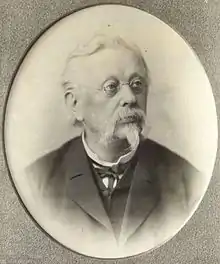 |
Wilhelm Rust | 1880–1892 | 15 August 1822 in Dessau |
2 May 1892 in Leipzig |
|
| 27 | 10 | 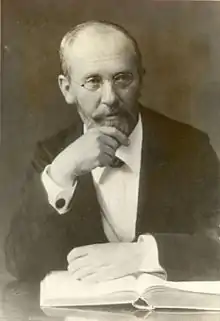 |
Gustav Schreck | 1893–1918 | 8 September 1849 in Zeulenroda |
22 January 1918 in Leipzig |
|
| 28 | 11 | 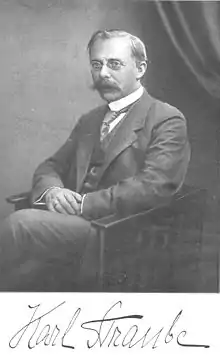 |
Karl Straube | 1918–1939 | 6 January 1873 in Berlin |
27 April 1950 in Leipzig |
|
| 29 | 12 |  |
Günther Ramin | 1939–1956 | 15 October 1898 in Karlsruhe |
27 February 1956 in Leipzig |
|
| 30 | 13 | 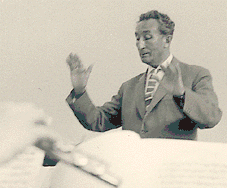 |
Kurt Thomas | 1957–1960 | 25 May 1904 in Tönning |
31 March 1973 in Bad Oeynhausen |
|
| 31 | 14 | Erhard Mauersberger | 1961–1972 | 29 December 1903 in Mauersberg / Marienberg |
11 December 1982 in Leipzig |
||
| 32 | 15 | Hans-Joachim Rotzsch | 1972–1991 | 25 April 1929 in Leipzig |
24 September 2013 in Leipzig |
||
| 33 | 16 |  |
Georg Christoph Biller | 1992–2015 | 20 September 1955 in Nebra |
27 January 2022 | |
| 34 | 17 |  |
Gotthold Schwarz | 2016–2021 | 2 May 1952 in Zwickau |
||
| 35 | 18 | Andreas Reize | 2021 | 19 May 1975 in Solothurn, Switzerland |
First Swiss and the first Catholic |
Notes
- Bach could theoretically be considered the 18th Thomaskantor, as after Kuhnau's death on 11 August 1723, the Leipzig city council proposed Georg Philipp Telemann as his successor. Telemann, however, was already Kantor at the local Johanneum Lateinschule in Hamburg; he immediately negotiated a salary rise with their city council, thus remaining in that post until his death.[13] After Telemann declined Leipzig council's offer, a new list of candidates was proposed, headed by Kauffmann and A.C. Tufen, then Graupner and finally Bach. Even though Graupner was formally approved by the Leipzig council, he could not take up the post, because his resignation as court Hofkapellmeister was refused by the Landgrave of Darmstadt.[14]
References
- Wolff 1991, p. 8.
- Petzoldt 2013, p. 1.
- Petzoldt 2013, p. 5–6.
- Wolff 1991, p. 93.
- Wolff 1991, p. 38.
- Wolff 1991, p. 30.
- Dürr 1971, p. 219.
- Peter 2015.
- Wolff 2002, p. 251–252.
- Wolff 1991, p. 39.
- Wolff 2002, p. 247.
- Wolff 2002, p. 246.
- Basso, Alberto (2018). Frau Musika, la vita e le opere di J.S. Bach, 1 : le origini familiari, l'ambiente luterano, gli anni giovanili, Weimar e Köthen (1685–1723) (in Italian). Torino: EDT. p. 547. ISBN 978-88-592-4742-5. OCLC 1043531226.
- Wolff 2002, p. 224.
Bibliography
- Dürr, Alfred (1971). Die Kantaten von Johann Sebastian Bach (in German). Vol. 1. Bärenreiter-Verlag. OCLC 523584.
- Petzoldt, Martin (2013). "Liturgy and Music in Leipzig's Main Churches" (PDF) (in German). bach-cantatas.com.
- Wolff, Christoph (1991). Bach: Essays on His Life and Music. Harvard University Press. ISBN 978-0-674-05926-9.
- Wolff, Christoph (2002). Johann Sebastian Bach: The Learned Musician. W. W. Norton & Company. ISBN 978-0-393-32256-9.
- "Peterskirche Leipzig / Geschichte" (in German). St. Peter, Leipzig. 2015. Retrieved 22 January 2015.
- Stefan Altner: Das Thomaskantorat im 19. Jahrhundert. Bewerber und Kandidaten für das Leipziger Thomaskantorat in den Jahren 1842 bis 1918. Quellenstudien zur Entwicklung des Thomaskantorats und des Thomanerchors vom Wegfall der öffentlichen Singumgänge 1837 bis zur ersten Auslandsreise 1920. Passage-Verlag, Leipzig 2006, ISBN 3-938543-15-9.
- Johann Gottfried Stallbaum: Über den innern Zusammenhang musikalischer Bildung der Jugend mit dem Gesammtzwecke des Gymnasiums. Eine Inauguralrede, nebst biographischen Nachrichten über die Cantoren an der Thomasschule zu Leipzig. Fritzsche, Leipzig 1842.
External links
- Ordnung / Der Schule / zu S. Thomæ, Leipzig 1723 (PDF, in German)
- The Leipzig City Council’s Statutes for St. Thomas School, Leipzig 1723 (PDF)
_Foto_H.-P.Haack_bearbeitet.jpg.webp)